SFP connectors sit at the heart of modern Ethernet fabrics. By decoupling the physical medium from the port, they let the same switch, router, or server NIC speak fiber or copper with a quick module swap—no chassis changes, no rewiring marathon. In this guide, you’ll get a clear view of what SFP connectors are, how the electrical and optical pieces fit together, where the real-world gotchas hide, and why these tiny modules deliver big wins in flexibility, density, and uptime.
In everyday networking, “SFP connectors” is a convenient shorthand for both the SFP (Small Form-factor Pluggable) transceiver and the SFP port/cage it slides into on a switch, router, server NIC, or storage adapter. An SFP is hot-swappable, so a single hardware port can run over fiber or copper just by changing the module. On the front panel, optical modules present LC (typically duplex; BiDi uses a single LC), while copper modules present RJ-45. Inside the chassis, the module’s edge connector mates with the cage and the host ASIC/PHY.
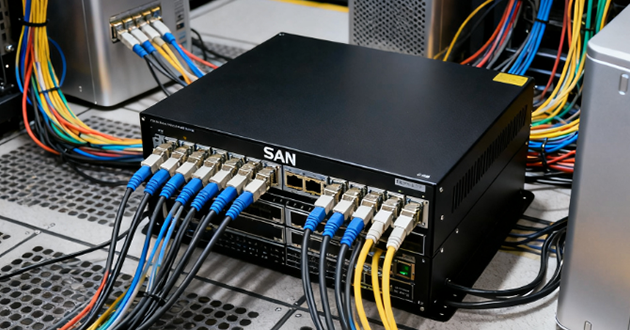
An SFP is more than a passive plug. It contains the optics or BASE-T PHY, clock/data recovery (CDR), and an EEPROM that the host reads over I²C to discover vendor, capabilities, and DOM/DDM telemetry—temperature, voltage, and Tx/Rx optical power with alarm thresholds. Because the intelligence lives in the module, the same port can be cabled for short multimode runs, long single-mode spans, or existing copper—no chassis change required.
Digging a level deeper, optical SFPs integrate TOSA/ROSA assemblies driven by the host SerDes. Common wavelengths are 850 nm for SR (VCSEL over OM3/OM4), 1310 nm for LR, and 1550 nm for ER/ZR on OS2 single-mode. BiDi optics add a miniature WDM coupler so transmit and receive share one fiber at different wavelengths (often 1270/1330 nm). Copper (RJ-45) SFPs embed a full BASE-T PHY to drive Cat5e/6/6A; they typically draw more power and add a touch more latency than optics or DAC.
On the host side, the electrical lane and line code must match: 1000BASE-X (8b/10b) for 1G SFP, 10GBASE-R (64b/66b) for SFP+, and 25G variants for SFP28 with tighter signal-integrity budgets. Many modules implement CDR, transmit pre-emphasis, and receive equalization to keep the eye diagram open over fiber or twinax; at 25G it’s common to rely on host FEC (e.g., RS-FEC) to hit BER targets. Management follows the SFF/MSA maps (notably SFF-8472 for diagnostics), and control pins such as TX_DISABLE, TX_FAULT, and RX_LOS let the host mute lasers, detect faults, and react to loss of signal. Unlike BASE-T, most fiber links are fixed-rate—there’s no full Clause-28 autoneg—so both ends must agree on speed, wavelength, and (for 25G) FEC policy.
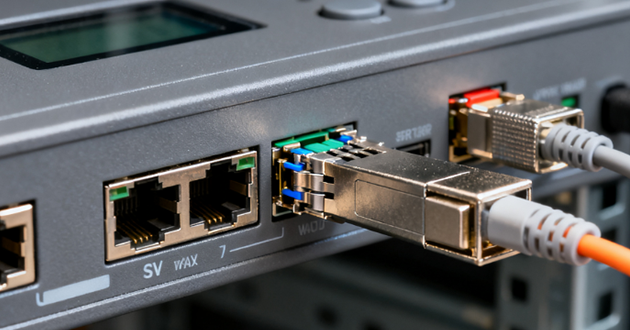
A few real-world considerations make or break deployments. Vendor coding/whitelists can restrict third-party optics despite standards compliance, so check platform guidance or use correctly coded modules. Thermals scale with speed and type: many 1G optics are under ~1 W, SFP+ often ~1–1.5 W, while some SFP28 and RJ-45 copper SFPs can exceed 2–3 W, which matters in dense line cards. Link budget governs reach—transmit power minus fiber/connector loss must clear the receiver’s sensitivity with margin—and dirty LC ferrules are a frequent culprit for flapping links, so clean before connecting. Finally, while many SFP+ cages accept 1G SFPs and some SFP28 ports can run 10G with suitable optics/cables, these behaviors are device-dependent; confirm supported port modes and approved modules in the platform documentation.
|
Variant / Front-end style |
Typical speed |
Medium |
Front interface |
Typical reach |
Notes / Use cases |
|
SFP |
1G |
Fiber / Copper |
LC / RJ-45 |
Depends on optic/copper |
Classic 1G form factor |
|
SFP+ |
10G |
Fiber / Copper |
LC / RJ-45 |
Depends on optic/copper |
Many SFP+ cages backward-compatible with 1G SFP (device-dependent) |
|
SFP28 |
25G |
Fiber / Copper |
LC |
Depends on optic |
Common for 25G access/leaf-spine |
|
SR |
1G/10G/25G |
Multimode fiber (OM3/OM4) |
LC |
Short (tens to few hundred meters) |
In-rack / same-floor links |
|
LR / ER / ZR |
10G/25G |
Single-mode fiber (OS2) |
LC |
LR ≈10 km / ER ≈40 km / ZR ≈80 km |
Campus/metro distances |
|
BiDi |
1G/10G/25G |
Single-fiber bidirectional |
Single LC |
Typically 1–40 km |
Saves fiber strands |
|
CWDM / DWDM |
1G/10G/25G |
Single-mode (wavelength-division) |
LC |
10–80+ km (power-budget dependent) |
Multiplex wavelengths for metro/backhaul |
|
DAC (direct-attach copper) |
10G/25G |
Twinax copper |
Fixed cable |
Ultra-short (~1–5 m; up to ~7 m) |
Low cost; in-rack |
|
AOC (active optical cable) |
10G/25G |
Pre-terminated fiber |
Fixed cable |
Short–mid (~3–30 m) |
Clean cabling; EMI-resistant |
|
Copper SFP (RJ-45) |
1/2.5/5/10G (per model) |
Twisted pair (Cat5e/6/6A) |
RJ-45 |
Up to 100 m (10G typically Cat6A) |
Reuse existing copper runs |
Inside the cage, the SFP plus connector’s edge fingers plug straight into the host PHY/SerDes on the switch or NIC. The port drives a single high-speed serial lane using the encoding for the selected rate: 1000BASE-X (8b/10b) at 1G, 10GBASE-R (64b/66b) at 10G, and the 25GBASE-R family for SFP28. Platforms may expose rate-select pins to choose data rate or EQ profiles, and the signal path can include CDR/retimer logic (in the module or on the host) to remove jitter and recover clock. On transmit, the host applies pre-/de-emphasis; on receive, it uses equalization (e.g., CTLE/DFE) so the eye stays open across backplane traces, connectors, and short cables. The result is a clean, spec-compliant electrical waveform ready for conversion on the optical or copper side.

An optical SFP connector module carries a TOSA/ROSA pair: the transmitter uses a laser diode (typically a VCSEL at 850 nm for SR over OM3/OM4, or a DFB/FP at 1310/1550 nm for LR/ER/ZR over OS2), while the receiver uses a photodiode with transimpedance amplification. BiDi variants insert a tiny WDM splitter/combiner so TX and RX ride a single strand at different wavelengths (often 1270/1330 nm). To keep the eye opening within spec, the module applies CDR, launch power control, and equalization; return loss and connector cleanliness still matter, especially on single-mode links.
An RJ-45 SFP plus connector module integrates a full BASE-T PHY with DSP blocks for echo/NEXT/FEXT cancellation and autonegotiation (often including 2.5/5 GbE on some models). It’s the fastest way to reuse existing Cat5e/6/6A plants and mixed copper environments. Trade-offs: higher power draw and a little extra latency versus optics or DAC due to the PHY’s digital signal processing.

DAC (twinax) and AOC (active optical cable) SFP assemblies shift most analog challenges into a factory-terminated cable. The SFP ends expose the standard electrical host interface; the attached twinax or fiber handles the link. DAC delivers ultra-low latency and cost for very short runs (≈1–5 m, sometimes ~7 m depending on cable gauge), while AOC extends cleanly into the short–mid range (~3–30 m) with simple routing and no fiber cleaning rituals.
Every SFP connector exposes an EEPROM via I²C listing vendor/mode info and, when enabled, DOM/DDM readings—temperature, supply voltage, laser bias, and Tx/Rx optical power with warn/alarm thresholds. Operators lean on these metrics to validate link budget, catch contaminated ferrules or bent jumpers, and preempt failing lasers. (Reality check: optics power reporting often has tolerance; look for trends and threshold crossings, not single snapshots.)
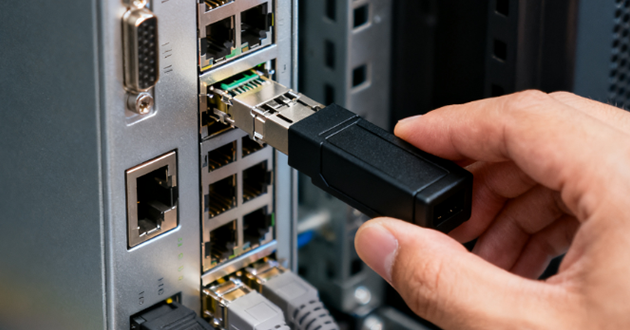
Being hot-pluggable, the SFP connector announces itself on insertion: the host reads the EEPROM, negotiates rate/retimer/FEC policy, asserts proper rate-select/EQ settings, then enables the transmitter (de-assert TX_DISABLE) to bring the link up. On removal or fault, signals like RX_LOS and TX_FAULT propagate to the OS so the interface is taken down cleanly—no reboot, minimal disruption.
An SFP connector lets a single port “speak” many dialects—SR over multimode, LR/ER/ZR over single-mode, BiDi, CWDM/DWDM, RJ-45, DAC, or AOC—simply by swapping the module, not the hardware. That flexibility keeps equipment relevant as cabling, rack layouts, or service needs evolve. It also extends the life of costly chassis and line cards because you adapt optics to the plant rather than redesign the plant for the port. In mixed environments, it’s easy to start with RJ-45 for management and later migrate the same ports to fiber uplinks without touching the switch.
Choose the least expensive option that satisfies the reach: DAC for in-rack (~1–5 m), SR for same-row (hundreds of meters on OM3/OM4), and LR/ER/ZR for campus or metro spans. With each SFP type specifying transmit power and receiver sensitivity, links can be engineered to a known budget—avoiding overpriced optics that add no real benefit. For short but tidy runs, AOC offers easier handling than twinax while staying far cheaper than long-reach optics.

The compact SFP connector footprint packs more interfaces per rack unit, scaling your fabric without enlarging the chassis or turning the faceplate into spaghetti. Higher density enables richer topologies—more leaf links per ToR or more uplinks per access switch—without a forklift upgrade. Just plan airflow and cable routing carefully; tight jumper bundles next to high-power optics can create thermal hotspots.
Failures are localized to a pluggable. A small spare kit—SR, LR, RJ-45, DAC—covers most incidents, speeds swaps, and stays portable across platforms. Because an SFP is field-replaceable, you can restore service quickly and perform deeper root-cause analysis later, reducing outage windows and operational overhead. Standardizing spares across sites also keeps inventory lean.
The same slot can operate at 1/10/25G (platform-dependent), and many SFP+ cages accept 1G SFP optics for backward compatibility—ideal for phased upgrades. Where supported, tweaking FEC and equalization can stabilize higher-rate links without changing modules. You scale bandwidth incrementally, port by port, instead of committing to a disruptive chassis refresh.

DOM/DDM telemetry—temperature, voltage, laser bias, and Tx/Rx optical power—gives real-time visibility into optics health. Surfacing these metrics via SNMP/CLI/gNMI lets you alert on trends (e.g., steadily rising Tx power) rather than waiting for failures. Coupling telemetry with a simple “clean & reseat” playbook often resolves intermittent errors faster than broad hardware swaps.
Use OEM optics for single-vendor support or standards-compatible SFP connector modules for better price and availability—just account for host vendor coding/whitelists. In multi-vendor networks, keep a short approved list per speed/reach to avoid surprises while preserving procurement flexibility. Programmable/coded-to-order optics can be a sweet spot: one physical SKU with multiple “personalities” to satisfy different device checks.
SFP plus connector optics are the everyday glue for leaf–spine and access–aggregation fabrics. You’ll see 10G SFP+ SR for short MMF runs in a row, 25G SFP28 for higher east–west bandwidth (DAC/AOC for in-rack, LR on OS2 for longer pulls), and 1G SFP on access uplinks where budget or legacy dictates. As quick heuristics: SR ≈ 300–400 m (fiber grade dependent), LR ≈ 10 km, ER/ZR ≈ 40/80 km with adequate budget. During migrations, QSFP↔SFP breakout cables (e.g., 100G→4×25G) help you mix port types without redesigning the fabric.
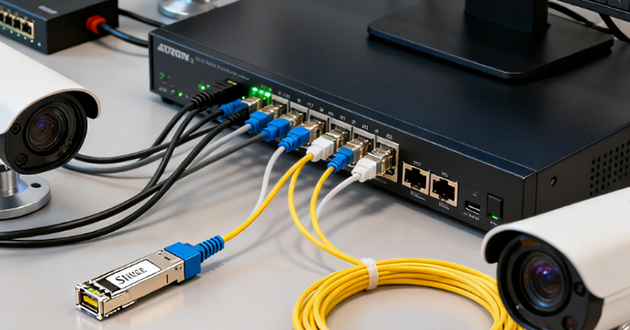
Hosts with SFP connector ports (NICs/HBAs) link to switches using SFP+/SFP28 optics or DAC/AOC for ultra-short, low-latency paths. In SANs, Fibre Channel SFPs—8/16G (SFP+) and 32G (SFP28)—deliver deterministic performance with the same hot-swap operational model. For jitter-sensitive or storage traffic, short DAC runs minimize serialization latency and simplify cabling inside racks.
SFP plus connector modules in CWDM/DWDM flavors stack multiple wavelengths on a pair (or even a single strand with BiDi) to conserve ducts and simplify backhaul. DWDM C-band optics pair well with OADMs/EDFAs and follow strict link-budget and dispersion planning; CWDM provides wider spacing and simpler turn-ups over shorter metro spans. DOM/DDM telemetry is invaluable here—remote power and temperature trends often flag plant issues before alarms fire.
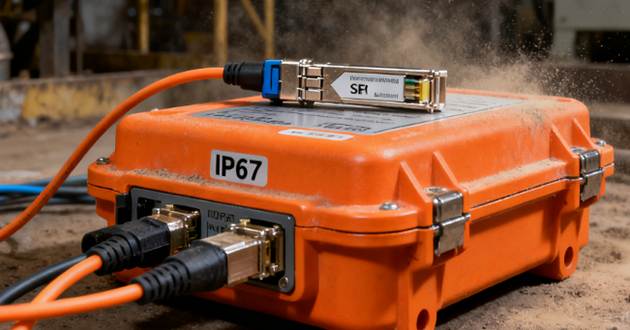
Where copper struggles with EMI, distance, or grounding, SFP connector fiber uplinks bring remote closets, cameras, and controls back to the core safely (and immune to lightning/ground loops). Look for rugged/extended-temp optics (often –40 °C to +85 °C) and coated PCBs in harsher sites, or compact media converters with SFP slots on DIN rail. Single-fiber BiDi optics are a practical fix when conduit space is tight.
For events, labs, broadcast flypacks, or field kits, standardizing on SFP connectors keeps you agile. A small pouch—SR, LR, a couple RJ-45 SFPs, plus DAC/AOC—lets you adapt to whatever plant you find on site and light links fast without swapping hardware. Label modules and keep dust caps handy; clean ferrules are the difference between a smooth turn-up and a mystery flap.
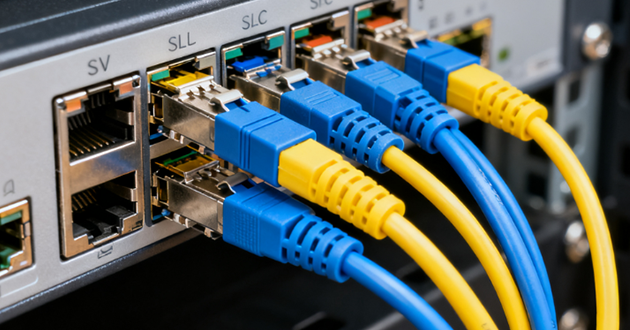
Conclusion
SFP connectors turn ports into Lego bricks: pick the speed, reach, and medium you need today—and change it tomorrow without replacing hardware.